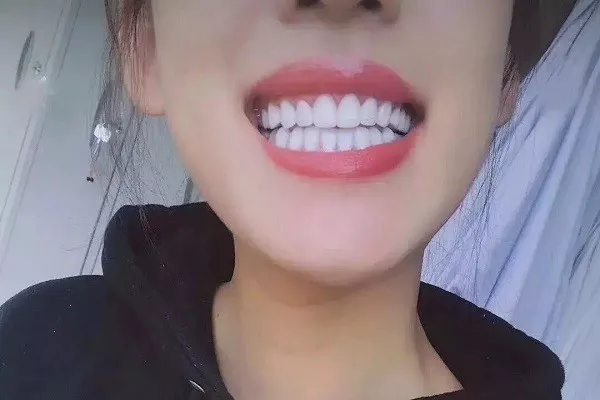Whitening strips offer a convenient and affordable way to brighten your teeth. However, they can sometimes cause tooth sensitivity and pain, making the experience uncomfortable for some people. In this article, we will explore the reasons why whitening strips can cause sensitivity and pain, and provide you with tips on how to manage it effectively.
Why Do My Teeth Hurt After Using Whitening Strips?
Here are some additional points to further explain why your teeth may hurt after using whitening strips:
- Bleaching Agents
The active ingredient in most whitening strips is peroxide, which is a bleaching agent that can penetrate the enamel layer of your teeth and break down stain molecules. However, this process can also cause temporary tooth sensitivity and pain, especially if you have thin enamel or exposed roots.
- Enamel Erosion
Overuse of whitening strips or leaving them on for too long can damage the enamel on your teeth, leading to sensitivity and pain. The enamel is the hard outer layer that protects your teeth from damage, so it’s important to follow the recommended usage time and frequency.
- Gum Irritation
Whitening strips can sometimes come into contact with your gums, causing irritation and discomfort. This can be prevented by carefully placing the strips on your teeth without touching your gums.
- Existing Dental Issues
If you already have dental issues such as cavities or gum disease, using whitening strips can exacerbate the pain and sensitivity in those areas. It’s best to consult with your dentist before using any whitening products if you have pre-existing dental issues.
How Can I Manage?
- Use Sensitive Toothpaste
Switch to a toothpaste specifically designed for sensitive teeth. These toothpastes contain ingredients that help to desensitize your teeth and protect them from further damage.
- Apply Fluoride Gel
Apply fluoride gel to your teeth after using whitening strips. This helps to strengthen your teeth and reduce sensitivity by filling in the pores of your enamel.
- Reduce Frequency of Use
Reduce the frequency of your whitening strip use. Overusing whitening strips can cause excessive sensitivity and pain. Follow the instructions provided with the product and do not exceed the recommended usage time.
- Shorten Usage Time
Shorten the amount of time you wear the whitening strips. If you experience sensitivity and pain during use, try cutting back the duration of your application.
- Take Breaks
Take breaks between whitening sessions. Give your teeth time to rest and recover from the bleaching process. This helps to prevent sensitivity and pain.
- Avoid Acidic Foods and Drinks
Avoid consuming acidic foods and drinks, such as citrus fruits, soda, and vinegar. These can erode your tooth enamel and increase tooth sensitivity.
- Rinse with Warm Water
Rinse your mouth with warm water before and after using whitening strips. This helps to reduce sensitivity and pain caused by the peroxide.
- Use Desensitizing Gel
Apply desensitizing gel to your teeth before using whitening strips. This creates a barrier that protects your teeth from the peroxide and reduces sensitivity.
- Visit Your Dentist
If you experience persistent sensitivity and pain, visit your dentist for a checkup. They may recommend additional treatments or prescribe medication to alleviate your symptoms.
Conclusion: Whitening strips are an effective way to brighten your teeth, but they can also cause sensitivity and pain. By following these tips, you can manage your symptoms and enjoy the benefits of a brighter smile. Remember to always follow the instructions provided with the product and consult your dentist if you experience persistent sensitivity and pain.
Related Topics:
































